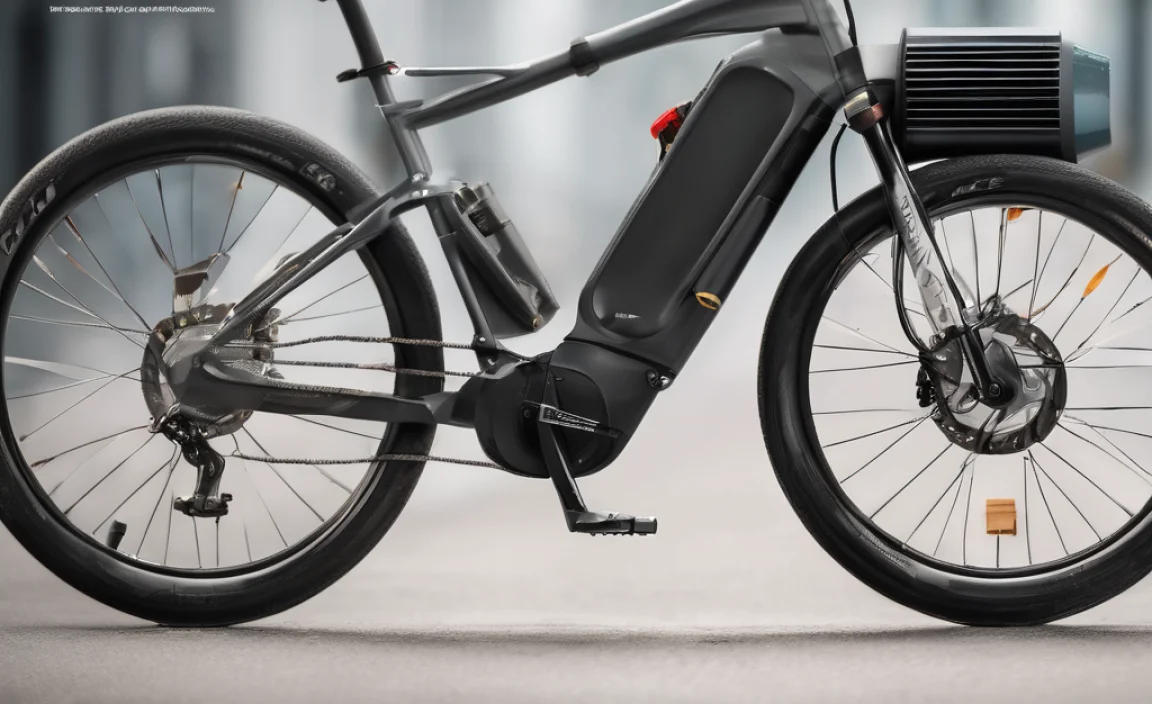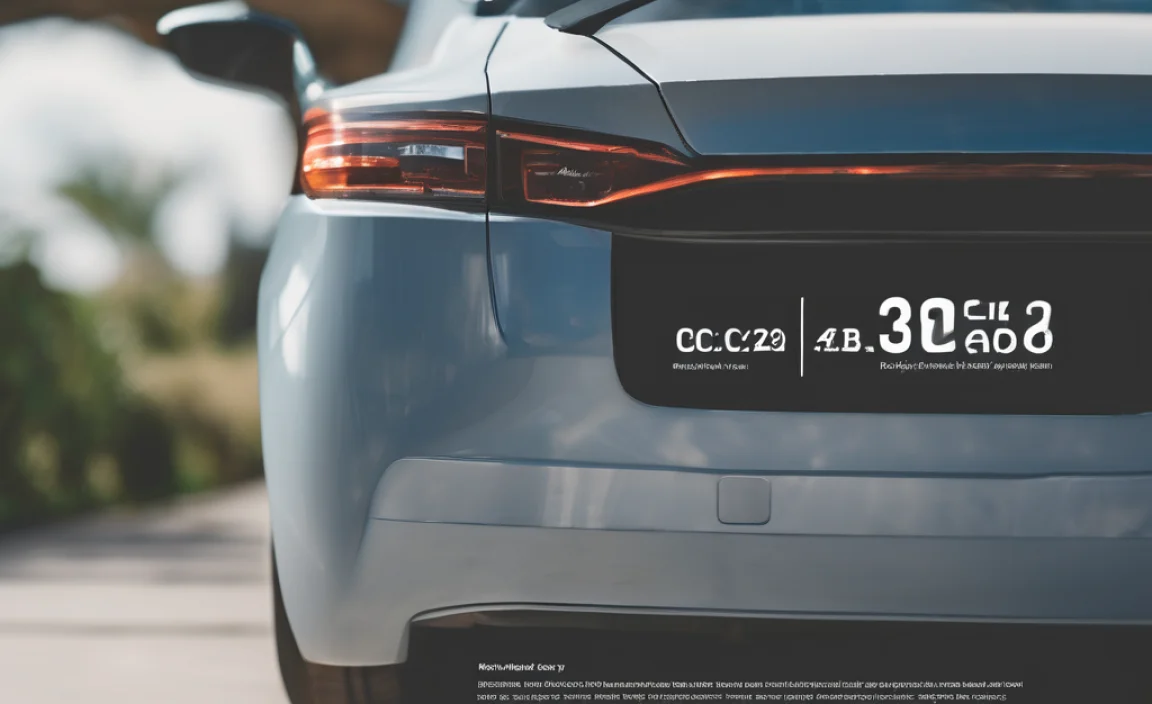Quick Summary
Choosing the right USB-C power adapter for your MacBook Pro is straightforward. Ensure it matches your MacBook Pro’s wattage requirement, ideally opting for Apple-certified chargers or reputable third-party brands. This guide will help you find a safe, reliable, and effective power adapter so your MacBook Pro stays charged and ready to go.
Keeping your MacBook Pro powered up is essential, whether you’re working on a big project, streaming your favorite show, or just browsing online. But when your original power adapter goes missing or stops working, figuring out the right replacement can feel a bit confusing. You’ve probably seen many different USB-C power adapters out there, and it’s easy to wonder which one is the best fit for your MacBook Pro. Don’t worry, I’m here to help! We’ll break down exactly what you need to look for, so you can confidently pick the best USB-C power adapter without any guesswork.
Why the Right USB-C Power Adapter Matters for Your MacBook Pro
Your MacBook Pro is a powerful device, and it needs the right kind of power to run smoothly and charge efficiently. Using an incorrect power adapter can lead to a few problems. It might charge your MacBook Pro too slowly, or worse, it could potentially damage the battery or the laptop itself over time. Think of it like giving your car the wrong kind of fuel – it’s just not going to perform its best and could end up causing issues.
USB-C is a versatile connector, but not all USB-C chargers are created equal. They need to deliver a specific amount of power, known as wattage, and communicate correctly with your MacBook Pro to ensure a safe and effective charge. Getting this right means your MacBook Pro will charge at its optimal speed, keeping you productive and connected.
Understanding MacBook Pro Wattage Requirements
The most crucial factor when choosing a USB-C power adapter for your MacBook Pro is its wattage. Wattage is simply a measure of power – how much energy the adapter can deliver. Your MacBook Pro model has a specific wattage it’s designed to charge with, and this varies depending on the year and the specific model (like the MacBook Pro 13-inch, 14-inch, or 16-inch).
Why does this matter? If you use an adapter with too low a wattage, your MacBook Pro will charge much slower than usual, and sometimes it might not even charge at all if you’re using power-intensive applications. On the flip side, while generally your MacBook Pro won’t draw more power than it needs even from a higher wattage adapter, it’s always best to get an adapter that matches or slightly exceeds your MacBook Pro’s recommended wattage for optimal performance and longevity. Using a significantly lower wattage adapter for extended periods is not recommended.
How to Find Your MacBook Pro’s Wattage
Finding out the recommended wattage for your MacBook Pro is usually quite simple:
- Check Your Original Charger: The easiest way is to look at the original USB-C power adapter that came with your MacBook Pro. The wattage will be printed on it, often in small text. It usually says something like “Input: 100-240V ~ 1.5A” and “Output: 20.3V — 3A” or similar. The second part, the output, is what you need. To calculate wattage, you multiply the volts (V) by the amps (A) for the primary charging speed. So, for 20.3V and 3A, that’s about 61W (20.3 3 = 60.9).
- Check Your MacBook Pro’s System Information: You can also find out what your MacBook Pro charges with through its system settings.
- Click the Apple logo in the top-left corner of your screen.
- Select “About This Mac.”
- Click “System Report…”
- Under the “Hardware” section, select “Power.”
- Look for “AC Charger Information” or “Connected Power Adapter.” It will usually list the wattage.
- Look Up Your Model Online: If you know your MacBook Pro model and year, a quick search on Apple’s support website or a reputable tech review site will tell you the recommended charger wattage.
Common MacBook Pro Wattage Standards
Here’s a general guide, but always verify for your specific model:
- MacBook Air (and older MacBook Pro models): Often use 30W or 45W adapters.
- 13-inch MacBook Pro (most recent models): Typically use 61W or 67W adapters.
- 14-inch MacBook Pro (M1 Pro/Max, M2 Pro/Max, M3 Pro/Max): Usually require 96W or 140W adapters.
- 15-inch MacBook Pro (newer models): Commonly use 87W or 96W adapters.
- 16-inch MacBook Pro (M1 Pro/Max, M2 Pro/Max, M3 Pro/Max): Generally need 140W adapters for full speed.
It’s important to note that newer MacBook Pro’s, especially those with M1 Pro/Max, M2 Pro/Max, and M3 Pro/Max chips, often come with higher wattage adapters and support faster charging technologies, like USB Power Delivery (USB PD) with Programmable Power Supply (PPS), especially if they use the MagSafe 3 connector. Even with USB-C, they are designed to handle these higher wattages efficiently.
Choosing Between Apple and Third-Party Adapters
When it comes to power adapters, you have two main options: buying directly from Apple or choosing a third-party brand. Both have their pros and cons.
Apple Original Adapters
Pros:
- Guaranteed Compatibility: Apple adapters are made specifically for your MacBook Pro, ensuring perfect compatibility and optimal charging performance.
- Reliability and Safety: They are built to strict quality and safety standards, minimizing the risk of damage to your device.
- Warranty Support: If anything goes wrong with an Apple adapter, you have Apple’s warranty and support.
Cons:
- Higher Cost: Apple accessories are generally more expensive than those from third-party manufacturers.
- Limited Options: You’re typically limited to the specific wattages and designs Apple offers for your model.
Third-Party Adapters
Pros:
- Cost-Effective: Third-party adapters are usually significantly cheaper than Apple’s original chargers.
- More Variety: You might find adapters with more ports (e.g., USB-A and USB-C on one adapter), different designs, or higher wattages that can also charge other devices.
- Advanced Features: Some third-party chargers offer features like GaN technology (Gallium Nitride), which makes them smaller and more efficient.
Cons:
- Quality Varies Widely: Not all third-party brands are created equal. Some are excellent, while others can be poorly made, leading to slow charging, overheating, or even damaging your MacBook Pro.
- Compatibility Issues: While most support USB-C Power Delivery, some may not be perfectly optimized for every MacBook Pro model, leading to slower charging than expected.
- Safety Risks: Lower-quality adapters might not meet safety certifications, posing a fire hazard or risk of electrical damage.
My Advice: If budget is not a major concern, sticking with an Apple adapter is the safest bet. However, if you opt for a third-party adapter, do your homework. Look for brands that are well-known and reputable in the tech accessory market. Brands like Anker, Belkin, Satechi, and UGREEN are often recommended and have good track records for quality and safety. Always check for certifications like UL, ETL, or FCC, which indicate that the product has met safety and performance standards. Reputable manufacturers will also clearly specify their charger’s compatibility with MacBook Pro models and its adherence to USB Power Delivery standards.
Key Features to Look for in a USB-C Power Adapter
Beyond just wattage, several other features can make a USB-C power adapter a better choice for your MacBook Pro:
1. USB Power Delivery (USB PD) Support
This is crucial. USB Power Delivery is a standard that allows for higher power transfer and dynamic power negotiation between the charger and the device. Your MacBook Pro absolutely relies on USB PD to charge efficiently and safely. Make sure the adapter explicitly states “USB PD” or “USB Power Delivery” support. This technology allows the charger to communicate with your MacBook Pro to determine the optimal voltage and current for charging. It’s what enables faster charging speeds and ensures safety by preventing overcharging.
The USB Implementers Forum (USB-IF), the organization that oversees USB standards, provides detailed information on USB Power Delivery technology, highlighting its importance for modern charging.
2. Gallium Nitride (GaN) Technology
GaN is a newer semiconductor material that is replacing silicon in power adapters. Chargers built with GaN technology are generally:
- Smaller and Lighter: This makes them incredibly portable, perfect for travel.
- More Efficient: They generate less heat, meaning more power goes directly to your MacBook Pro.
- Safer: Better heat management contributes to overall safety.
If you prioritize portability and efficiency, a GaN charger is an excellent option, provided it meets the necessary wattage and USB PD requirements for your MacBook Pro.
3. Number and Type of Ports
Many USB-C power adapters now come with multiple ports. This can be incredibly convenient if you need to charge other devices simultaneously, like your iPhone, AirPods, or an iPad. Look for adapters that offer a combination of USB-C PD ports and potentially USB-A ports if you still have older devices to charge.
For example, a 65W or 100W adapter might have:
- One USB-C PD port capable of charging your MacBook Pro at full speed.
- A second USB-C PD port for charging another device, perhaps at a lower wattage.
- A USB-A port for older devices.
Be mindful of the total wattage output. If an adapter claims 100W but has three ports, the wattage will be distributed among them. Ensure the primary USB-C PD port still offers enough power for your MacBook Pro when used alone or even when other ports are in use, depending on how the adapter distributes power.
4. Cable Quality and Length
The power adapter is only half the equation; the cable is just as important. For your MacBook Pro, you’ll want a USB-C to USB-C cable that supports high power delivery and data transfer speeds. Look for cables that are Thunderbolt 3 or Thunderbolt 4 certified if you want the best performance, though a good quality USB 3.1 or USB 3.2 Gen 2 cable will also work for charging and standard data transfer.
Original Apple USB-C charge cables are typically very robust. When choosing third-party cables, look for braided cables, as they tend to be more durable. Pay attention to the cable’s length, too. A longer cable offers more flexibility in where you can plug in your MacBook Pro.
Table: Comparing Common MacBook Pro Wattage Needs
Here’s a quick reference table to help you match your MacBook Pro model to potential charger wattages. Remember to confirm the exact wattage for your specific model.
| MacBook Pro Model (Typical) | Recommended Adapter Wattage | Fast Charging Support |
|---|---|---|
| MacBook Pro (13-inch, 2016-2020 models) | 61W | Yes (USB PD) |
| MacBook Pro (15-inch, 2016-2019 models) | 87W | Yes (USB PD) |
| MacBook Pro (13-inch, M1, M2) | 67W (or 61W) | Yes (USB PD) |
| MacBook Pro (14-inch, M1 Pro/Max, M2 Pro/Max, M3 Pro/Max) | 96W (or 140W with specific cable) | Yes (USB PD) |
| MacBook Pro (16-inch, M1 Pro/Max, M2 Pro/Max, M3 Pro/Max) | 140W | Yes (USB PD) |
| MacBook Pro (15-inch, 2023 M2/M3 models) | 96W | Yes (USB PD) |
Note: Newer models may include a higher wattage charger and support faster charging protocols. Always check your specific model’s requirements.
Safety First: What to Avoid
While searching for the perfect USB-C power adapter, it’s crucial to be aware of the dangers of using the wrong kind. Here are things to actively avoid:
- Extremely Cheap, Unbranded Chargers: If a deal seems too good to be true, it probably is. These often lack proper safety features and can cause significant damage.
- Chargers Without USB PD Certification: A standard USB-C charger might fit the port, but it won’t necessarily communicate with your MacBook Pro to deliver the right power. This means slow charging at best and potential damage at worst.
- Improper Wattage: As discussed, using a charger significantly below your MacBook Pro’s needs will result in poor performance. While using a slightly higher wattage charger is generally fine, using one that is excessively* high without proper USB PD negotiation could, in rare cases, pose a risk with poorly designed adapters from unknown brands.
- Damaged Cables or Adapters: Never use a power adapter or cable that shows any signs of wear, fraying, bent pins, or melted plastic. This is a serious fire and electrical hazard. The U.S. Consumer Product Safety Commission (CPSC) frequently issues recalls for electrical products due to safety concerns, so staying informed about safety alerts is always a good practice.
Step-by-Step: Choosing and Using Your USB-C Power Adapter
Let’s make this simple. Follow these steps to get the right adapter and use it safely:
Step 1: Identify Your MacBook Pro Model and Wattage Needs
As we covered, check your original charger, system settings, or look up your model online to determine the specific wattage your MacBook Pro requires. This is the absolute first step.
Step 2: Decide Between Apple and Third-Party
Consider your budget and risk tolerance. If you want peace of mind and guaranteed performance, go with Apple. If you’re looking for savings or more features, research reputable third-party brands known for quality and safety.
Step 3: Verify Key Features
When looking at potential adapters:
- Wattage: Make sure it meets or slightly exceeds your MacBook Pro’s needs.
- USB PD: Essential for proper charging. Look for the “USB PD” or “USB Power Delivery” label.
- Safety Certifications: For third-party adapters, check for UL, ETL, FCC, or CE marks.
- Reputable Brand: Stick to well-known brands if going the third-party route.
Step 4: Purchase the Adapter and Cable
Buy your chosen adapter. If you need a new cable, ensure it’s USB-C to USB-C and rated for charging speeds that match your adapter and MacBook Pro (e.g., Thunderbolt 3/4 certified cables are great for higher wattages and data).
Step 5: Connect and Charge Safely
Plug the USB-C cable into the adapter and then into the USB-C port on your MacBook Pro. Use a grounded electrical outlet. Avoid using damaged outlets or extension cords if possible.
Step 6: Monitor Initial Charging
The first few times you use a new adapter, it’s a good idea to keep an eye on it. Check that the adapter isn’t getting excessively hot (warm is normal due to charging, but hot to the touch is a concern). Ensure your MacBook Pro indicates it’s charging and at a reasonable speed. If you notice any strange smells, sounds, or smoke, unplug it immediately and discontinue use.




